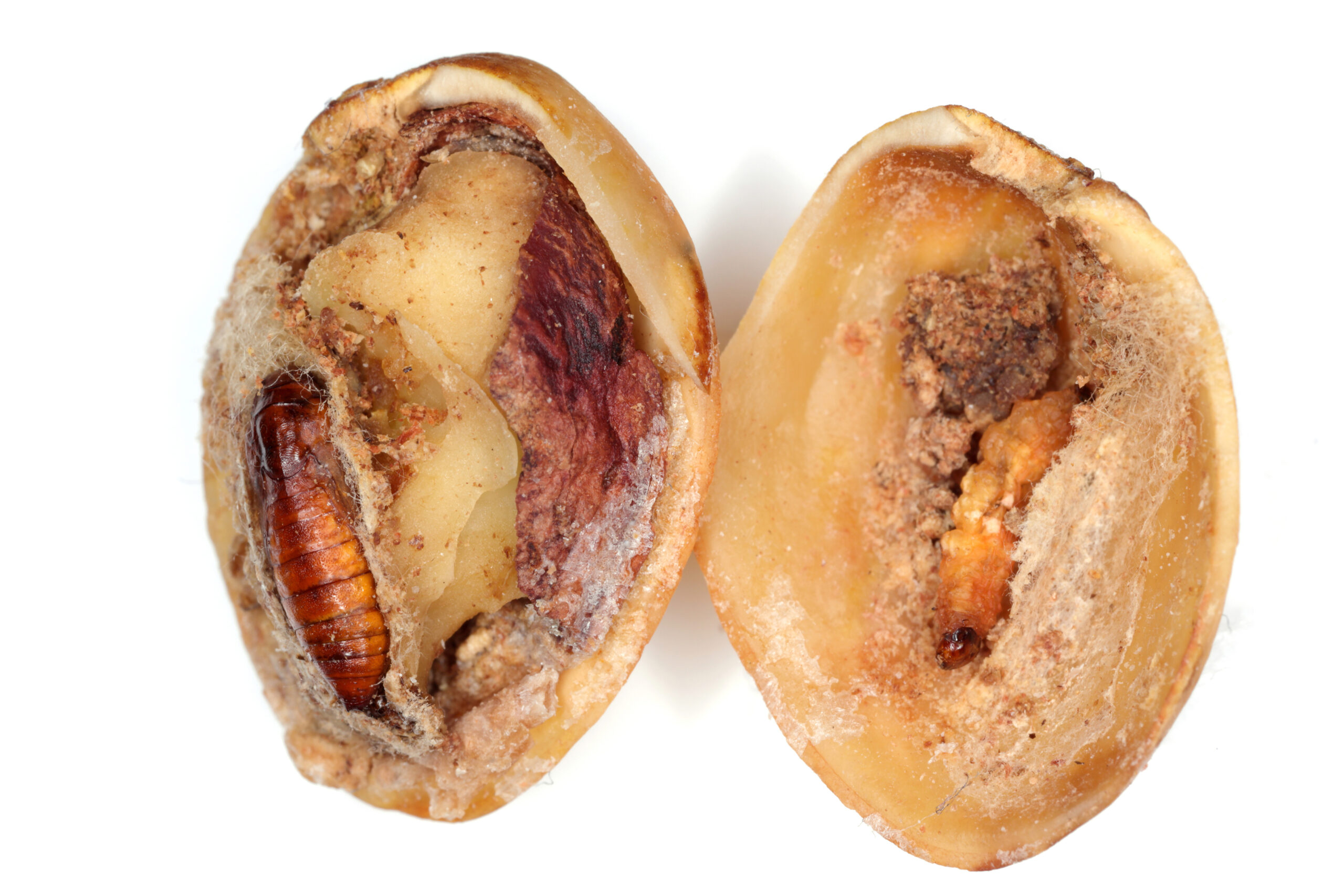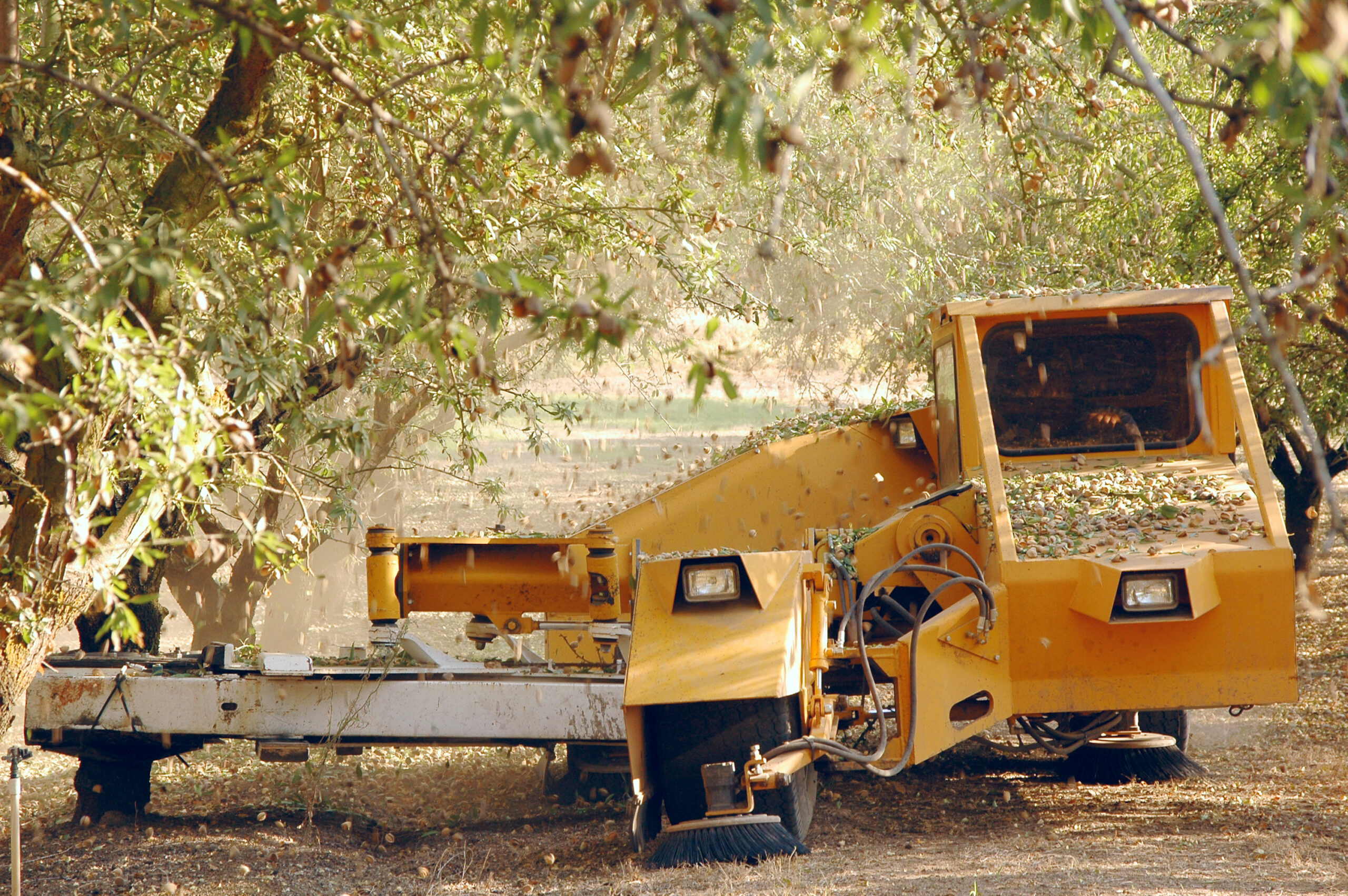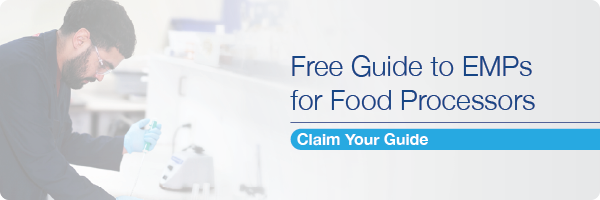Aflatoxins are one of the biggest threats to producing safe, high-quality almonds that growers and processors face. Consuming almonds and other nuts contaminated with aflatoxins can increase the risk of cancer and other health problems, while a single rejected consignment due to aflatoxin contamination can cost $10,000 in expenses, and more if the shipment must be destroyed.
Given the importance of almonds to the U.S. and California economies, understanding aflatoxins and aflatoxin testing is vital for your business. Here’s what you need to know.
What is Aflatoxin?
Aflatoxins are naturally occurring, but potentially carcinogenic, mycotoxins produced by certain molds, primarily Aspergillus flavus and A. parasiticus. They can contaminate several economically important crops in California, including almonds, figs, and pistachios. There are four major aflatoxins:
- B1
- B2
- G1
- G2
Aflatoxins in almonds and other crops can cause serious health problems. Chronic exposure can lead to increased risk of liver cancer; reduced immune function; and liver, kidney, and neurological damage. For that reason, most countries have established tolerances for aflatoxin contamination on almonds and other nuts.
What Causes Aflatoxins in Almonds?
Aflatoxins in almonds was a minor concern until recently. However, severe drought throughout California combined with increased infestation of the Navel Orangeworm pest have created conditions favorable to aflatoxin formation.
Almonds can become contaminated a few different ways, including the following:
- Contaminated soil
- Previously infested almonds (“mummy nuts”)
- Navel Orangeworm and other pests
Increased moisture content combined with high heat create conditions favorable to mold growth. Mold spores can spread and grow on developing almonds, causing aflatoxin contamination and almond mold.

Navel orangeworm infestation can lead to aflatoxin in pistachios, almonds, and other nuts.
What’s the Permissible Level of Aflatoxin in Almonds?
Most countries set a low permissible level of aflatoxin in almonds due to the potential health risks. These different thresholds only add complexity to an industry already trying to manage drought, supply chain problems, worker shortages, and low almond prices.
A few notable countries and their permissible level of aflatoxin in almonds are shown here, including the two largest importers of almonds outside the European Union (India and China). View the entire list here.
- United States: 20 ppb
- European Union: 10 ppb (8 ppb for B1)
- India: 10 ppb (ready-to-eat almonds)
- China: 20 ppb (5 ppb for B1)
How Can Growers Help Prevent Aflatoxins in Almonds?
The best way to deal with aflatoxin contamination in almonds is to prevent it. The Almond Board of California recommends following Good Agricultural Practices, which can go a long way toward reducing and preventing aflatoxin contamination.
Here are some best practices for reducing aflatoxin contamination:
Minimize Navel Orangeworm Damage
This pest can create larval boring wounds in the nutmeat that allow infection by aflatoxin-producing fungi. Failing to control navel orangeworm leads to increased aflatoxin contamination in almonds.
According to the Almond Board of California, here are a few best practices you can do to help reduce navel orangeworm infestation:
- Remove Mummy Nuts – Navel orangeworm seek harborage during winter in the nuts left on the trees after harvest. Remove mummy nuts before bud swell and destroy them by mid-March to help reduce navel orangeworm infestation.
- Harvest Early – Harvesting your almonds as soon as possible helps prevent a third generation of egg laying, reducing infestation.
- Treatment – Taking a harvest sample will help reveal if you need an in-season treatment to fight pests.
- Good Stockpile Management – Moisture combined with hot weather create ideal conditions for mold to grow and produce aflatoxins. Avoid stockpiling nuts with excess moisture content; research shows that stockpiled almonds with total fruit moisture content of 6.5-7% will lead to mold growth and aflatoxin contamination. Make sure to ventilate stockpiles, particularly if you deal with high condensation. Cover stockpiles at night when the air is most humid and air them out during the day. Monitor moisture levels continually.

Harvesting almonds as early as possible helps prevent a third generation of egg-laying, which helps reduce navel orangeworm infestation.
Sanitize Harvest and Delivery Equipment
Harvest is a prime opportunity to introduce contamination that results in the proliferation of microorganisms that produce aflatoxins or salmonella. Take care to inspect and clean vehicles and equipment to help avoid cross-contamination.
Ensure Almonds are Dry Before Being Picked Up
Excess moisture on the orchard floor can lead to the proliferation of mold and bacteria. It helps to keep the floor as level as possible to avoid low areas where water can collect. If standing water is present, avoid harvesting until it has dried.
Allow nuts to remain spread out on the orchard floor to dry after they’ve been shaken from the tree. If they get rained on, allow time for drying before sweeping. If there isn’t time, they should be allowed to dry at the processing plant after being picked up.
A Lot is Riding on Your Aflatoxin Testing
Your profitability depends on strict aflatoxin surveillance, and a major component of that is running an aflatoxin test at a reputable and accredited third-party laboratory. Proper sampling and testing satisfies regulatory agencies, safeguards your bottom line and helps produce the safe, high-quality almonds for which you’re known.
Proper sampling requires generating an aggregate sample comprised of incremental samples taken from throughout the production lot. These smaller samples are finely ground to produce a homogenous sample for testing, which maximizes accuracy. European officials, for example, prescribe a sampling protocol that requires one 20 kg aggregate sample of all nuts, one 20 kg sample for nuts that need further processing, and two 10 kg samples for ready-to-eat nuts. This protocol helps ensure accurate results.
Since the European Union is the destination for much of California’s almond crop, the California almond industry created the almonds Pre-Export Checks (PEC) program in 2015, which requires aflatoxin testing prior to shipment. While you don’t need a PEC certificate to export almonds to the EU, it helps speed your shipment, with almond consignments with a PEC certificate subject to less than 1% controls at the border.
Aflatoxin testing for the PEC program must be conducted by a USDA-approved laboratory, such as Certified Laboratories, which has a location in Turlock, California, the heart of the almond industry.
Aflatoxin Testing Method
When performing an aflatoxin test for almonds and pistachios, Certified Laboratories use the industry-standard AOAC 991.31, A-F, H method. Here’s a look at how aflatoxin testing for almonds and tree nuts is performed.
The aflatoxin is extracted using a methanol solution, this solution is then filtered, diluted, and applied to an immunoaffinity column (IAC). The aflatoxin in the solution will bind to the column as it flows. The chemist then follows up with water on the column to rid it of any impurities.
The aflatoxin is then removed from the IAC using 100% methanol. The sample is then diluted with water and injected into a High Performance Liquid Chromatography (HPLC) machine. The HPLC will separate the B1, B2, G1 and G2 aflatoxins, and it is equipped with a fluorescence detector (FLD) to detect the aflatoxin and provide the results in parts per billion (PPB).
Certified Laboratories also has a benchtop fluorometer that can read the total aflatoxin (without separating the individual aflatoxins). Contact us with any questions about aflatoxin testing for almonds or other nuts.
Almond Pasteurization Process Validation
Given the potential health risks of aflatoxins, salmonella and other contaminants, the United States and Canada require almonds to be pasteurized. A pair of salmonella outbreaks in the early 2000s prompted the USDA to require almond pasteurization in the U.S. beginning in 2007.
Almond Pasteurization Methods
There are a few different methods processors use to pasteurize almonds to kill aflatoxins, salmonella, and other contaminants, including the following:
FDA-Approved Methods
- Blanching: Meet minimum requirements of 2 minutes at 190°F for 5 log reduction.
- Oil Roasting: Meet minimum requirements of 260°F for 2 minutes for 5 log reduction.
- Propylene Oxide: Almonds are treated with propylene oxide, a registered fumigant in the US, for four hours to achieve a 5 log reduction (most export countries don’t accept this process, so it is used infrequently).
Non-FDA-Approved Methods
- Dry Roasting: Almonds are exposed to hot air between 265°F-310°F for 15-30 minutes, depending on the efficiency of the roaster, to achieve a 4 log reduction.
- Steam: Almonds are exposed to steam and high-heat dehydration, during which they reach 220°F to achieve a 4 log CFU reduction.
Whichever process is used, it’s important that it be validated to demonstrate your almonds or other products are produced in a safe manner. Running a process validation for almonds takes a lot of work and involves several steps, all of which must be done according to regulations and properly documented. It also requires working with an approved process authority who is experienced to handle any validation accepted by the Almond Board of California.
The team of experts at Certified Laboratories includes process authorities recognized by the Almond Board of California. We have the expertise and credentials you need to validate your processes and maximize product quality and safety. Download our process validation checklist so you know what to expect before your validation.
What to Look for in a Qualified Aflatoxin Testing Lab
As we said earlier, obtaining a Pre-Export Check (PEC) certificate through the Almond Board of California requires using a USDA-approved laboratory for aflatoxin testing, such as Certified Laboratories. Here are a few additional considerations when deciding on a lab to perform aflatoxin testing:
- In addition to USDA approval, look for a lab with FDA, A2LA, ISO-17025, USP and ASTA accreditation to ensure they’re using the proper aflatoxin testing and other methods for accuracy and compliance.
- Find a lab with experience in the almond and tree nut industry so personnel understand your challenges and can provide optimized solutions. Many labs can perform a range of microbiological tests for tree nuts and chemistry tests, but not all have experience in the almond and nut industry.
- Responsive service tailored to your needs is just as important as getting accurate test results. Does the lab offer a courier service to pick up samples? Do they reply to inquiries quickly? Do they provide an online portal so you can retrieve a Certificate of Analysis whenever you need it?
- As always, turnaround time is vital for any lab. Find one that can consistently provide aflatoxin test results in 24-48 hours.
- A lab that provides multiple test matrices ensures you can get the testing you need, often at a single location, saving you time and hassle.
- Process authorities who can validate your processes to ensure you’re producing food in a safe manner are sometimes tough to find; as we said earlier, there are only about 15 in the United States, and not all of them have the expertise to validate certain processes. Working with a lab partner with almond industry expertise can set you ahead of the competition.
It is Good Business to Use Certified Laboratories for Aflatoxin Testing
With a location in Turlock, California, the heart of almond country, Certified Laboratories delivers the localized service you need to produce and process almonds safely.
- Industry-leading TAT with same-day test set up.
- Responsive service tailored to your industry.
- Multiple test matrices so you can get the testing you need at one lab.
- Flexible pickup schedule.
- 24-hour access to your COAs through our online portal.
- Almond Board of California TERP-approved process authorities .
Contact us with your questions about aflatoxin testing and we’ll be glad to help.


